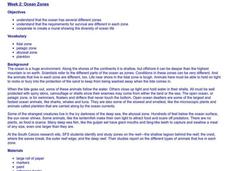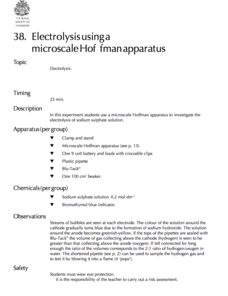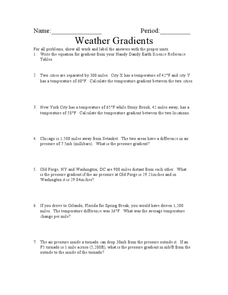Curated OER
Ocean Zones
Students create a mural showing ocean zones and the diversity of ocean life. They use reference books to create a list of plants and animals that would live in each zone.
Curated OER
Wildlife Fact File
Students research a specific animal. In this animal science lesson plan, students use a "Wildlife Fact Sheet" to take notes on their specific animal. Students use the Internet and reference books to gather information.
Curated OER
Life Cycle of a Salamander
Third graders examine the life cycle of a salamander. In this life cycles lesson, 3rd graders view a PowerPoint presentation about the life cycle of a salamander. Students take the temperature of a toy salamander with a thermometer and...
Curated OER
Dichotomous Keys
Students define the word dichotomous and explain why a dichotomous key is a useful tool in identifying different species. Then they look up words they are unfamiliar with or mollusk reference books so students can
learn the names of...
Curated OER
Out of this World! 1
In this space science activity, students use reference books or Internet searches to find the answers to 15 questions about the solar system.
Curated OER
Mountain Range Project
This is an outline for a geography project which requires learners to research, compare, and construct a book about various mountain environments around the world. Even though this is a simple outline, it contains some useful ideas and...
Open Oregon Educational Resources
Manufacturing Processes 4-5
No need to manufacture an excuse for learning about manufacturing. Scholar use an eBook to study manufacturing processes. The textbook covers milling machines, lathe machines, drill presses, bandsaws, surface grinders, heat treating,...
Baylor College
Your Nutrition Needs
It takes some work to ensure you have a balanced diet, but once you know the types of foods that are good for you, it becomes second nature. In the sixth of seven lessons about energy and nutrition, learners create a healthy eating plan...
Chicago Botanic Garden
Causes and Effects of Climate Change
It's time for your class to literally show what they know! Pupils illustrate what they learned about the causes and effects of climate change by filling out a graphic organizer to complete the 5-part series of lessons. They discuss them...
Virginia Racing Commission
Project Hoofbeat: Incorporating the Horse in the Classroom:
It's all about horses in this cross-curricular packet that includes everything equine from United States horse history, breeds, grooming tools, and plenty of new vocabulary terms. Split into 11 lessons, learners complete crossword...
Scholastic
Ready to Research Owls
Researching facts about owls can be a hoot for your class. Let them wisely collaborate on this writing project. The resource is the second part of three parts. It is best to use all three lessons in order.
Royal Society of Chemistry
Electrolysis Using a Microscale Hoffman Apparatus—Microscale Chemistry
Get big results out of a small-scale lab! Young chemists observe the electrolysis of sodium sulfate using a microscale experiment. A colorful indicator solution combined with the production of gas bubbles yields a variety of observations...
Curated OER
Books for Teaching Dinosaurs
Young scholars investigate dinosaurs through books. In this lesson about dinosaurs, students read a variety of books about dinosaurs. Young scholars become familiar with dinosaurs through reading about them. Students learn that reading...
Curated OER
Understanding Science Vocabulary And Categorization
Young scholars explore and examine scientific language and categorization as related to commonly known plants and animals. They hypothesize about a specific plant or animal, how it was scientifically named, what concepts and vocabulary...
Curated OER
Comparing and Collecting Bugs
Students differentiate between insects and non-insects. In this insects lesson, students review the attributes of insects and take a nature walk to look for insect homes. Students use resource books to identify the names of insects seen...
Curated OER
Bird Identification Worksheet 2
In this bird worksheet, students cross reference materials gathered to identify the bird pictured and fill in 7 boxes with the information gathered.
Curated OER
Radioactive Dating
In this radioactive dating worksheet, students use their reference guide in their text book to find the half-lives of 4 isotopes. They use a decay chart to help determine the half-lives and age of given bones and samples of radioactive...
Curated OER
Unusual Coral Reef Animals
In this science worksheet, students research an unusual coral reef animal. A list of 22 animals is provided to choose from or students may choose their own. After researching the animal, students illustrate the creature and write about...
Curated OER
Seed Dispersal
Students determine seed dispersal methods. In this life science instructional activity, students make predictions about how seeds might move, then look at seeds under micrographs or microscopes to analyze the seed coat and how this...
Curated OER
Weather Gradients
In this weather gradients learning exercise, students solve 7 problems which include finding the temperature and pressure gradients between different cities in the United States. They use a table from their book that gives them the...
Curated OER
The Sun Affects Earth
Third graders read, write, and listen to information about the sun and its effects on the Earth.as it relates to its axis, orbit, rotate, and revolution. In this solar system lesson, 3rd graders examine how the sun effects the Earth's...
Curated OER
OLYMPIC SHADOW BOXES
Students, in groups, use library reference materials to research an Olympic sport and create a visual display/shadow box to represent it.
Curated OER
Space Science: Locating Voyager 6
Sixth graders, in groups,create fact sheets about a lost space craft. Using data charts and additional compiled information, other teams of students attempt to locate the craft based on the clues given. In groups, 6th graders compile...
Curated OER
Insect Book
Fifth graders select an insect and create a page for an Insect ABC book to display their research. They choose an insect from a given letter of the alphabet and use KidPix to illustrate. They write 2-3 sentences describing their insect...

























